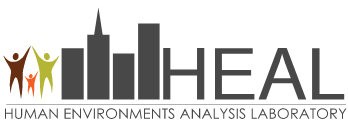
Human Environments Analysis Lab (HEAL)
Document Type
Response or Comment
Publication Date
9-2017
Journal
Global Health Promotion
Volume
24
Issue
3
First Page
68
Last Page
70
URL with Digital Object Identifier
https://doi.org/10.1177/2F1757975915602632
Abstract
Greater understanding of the important and complex relationship between the built environment and human health has made ‘healthy places’ a focus of public health and health promotion. While current literature concentrates on creating healthy places through traditional decision-making pathways (namely, municipal land use planning and urban design processes), this paper explores do-ityourself (DIY) urbanism: a movement circumventing traditional pathways to, arguably, create healthy places and advance social justice. Despite being aligned with several health promotion goals, DIY urbanism interventions are typically illegal and have been categorized as a type of civil disobedience. This is challenging for public health officials who may value DIY urbanism outcomes, but do not necessarily support the means by which it is achieved. Based on the literature, we present a preliminary approach to health promotion decision-making in this area. Public health officials can voice support for DIY urbanism interventions in some instances, but should proceed cautiously.



Notes
Also available open access in Global Health Promotion at: https://doi.org/10.1177/2F1757975915602632